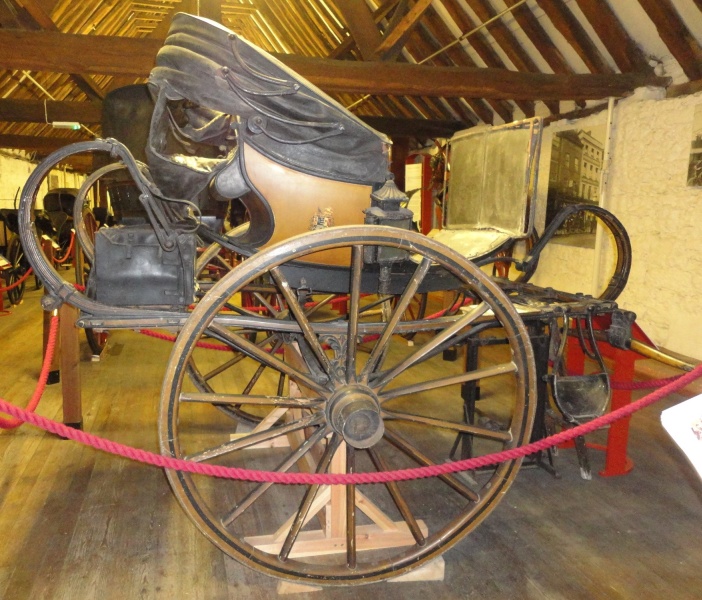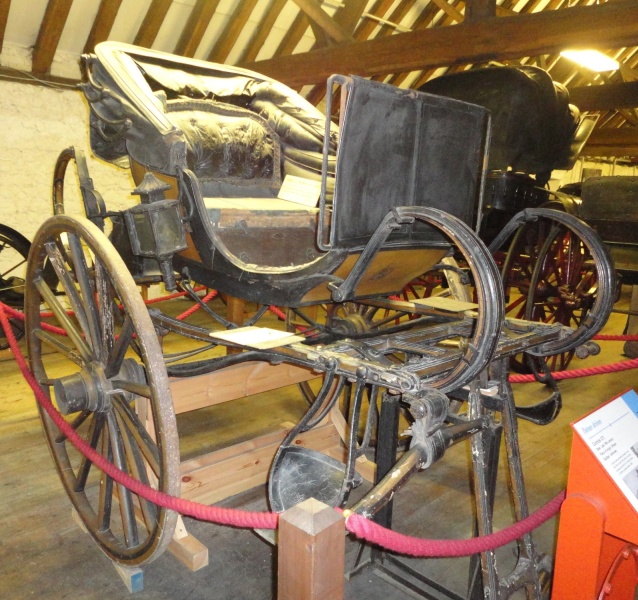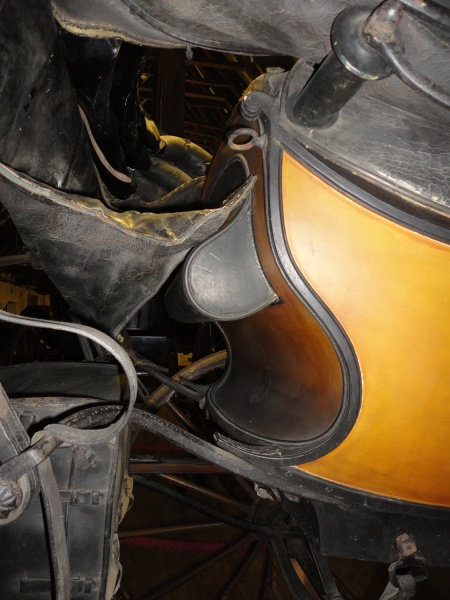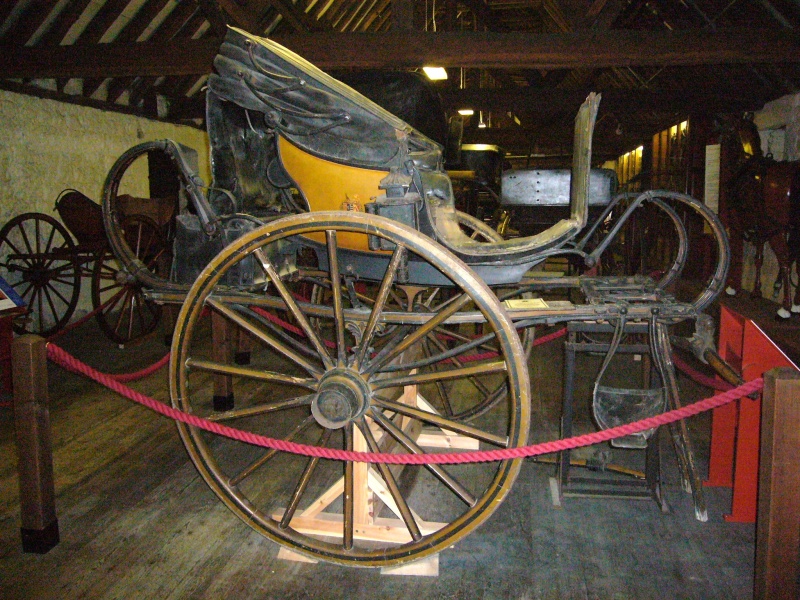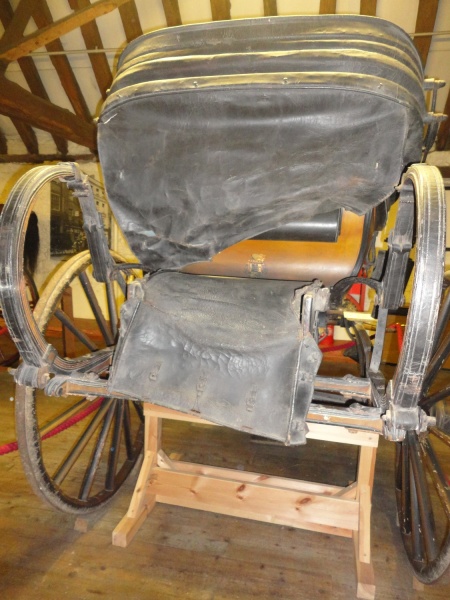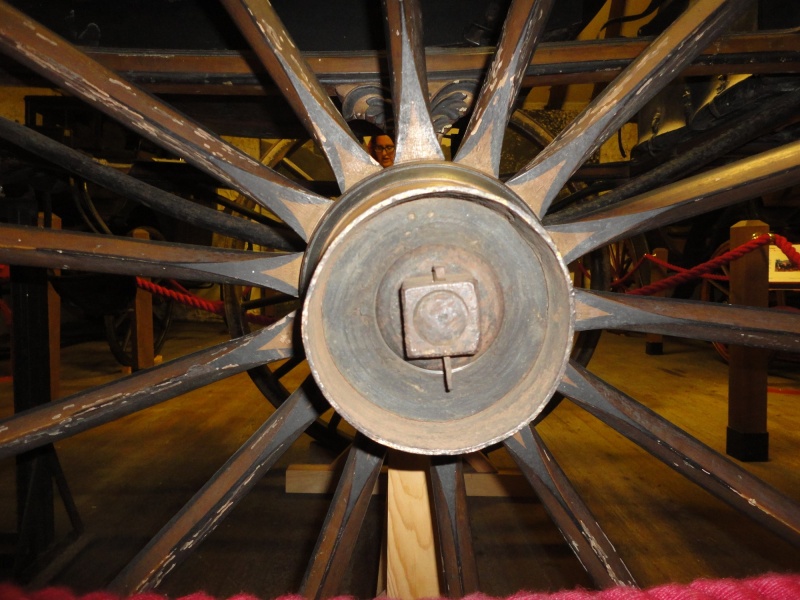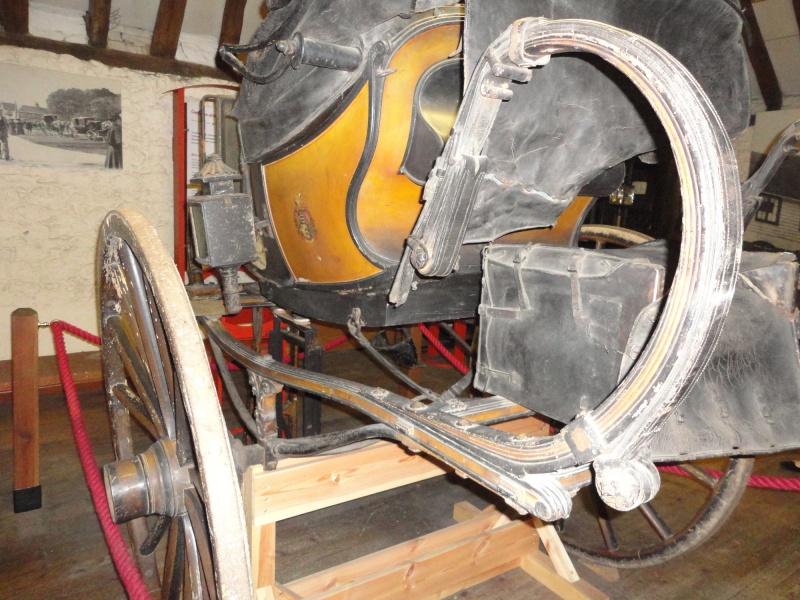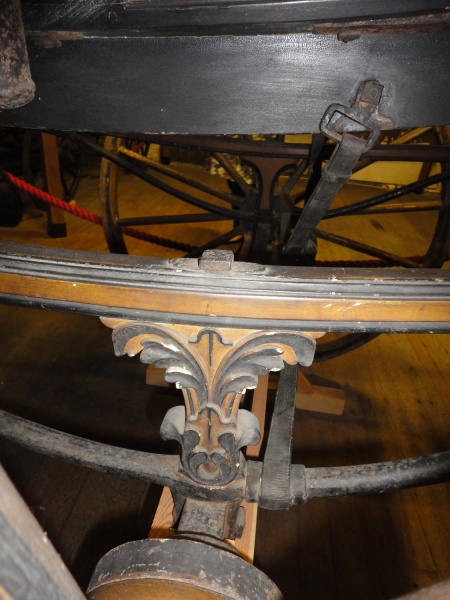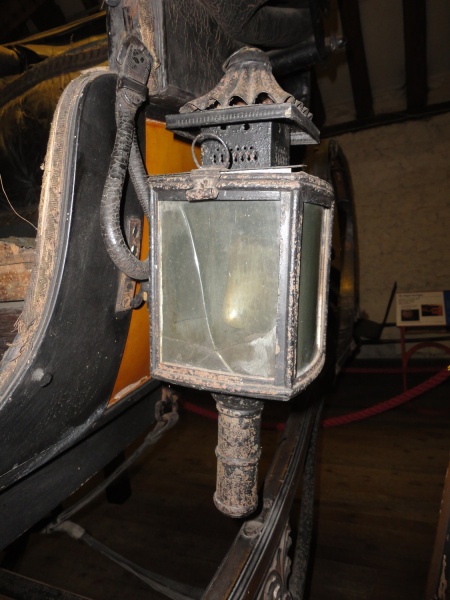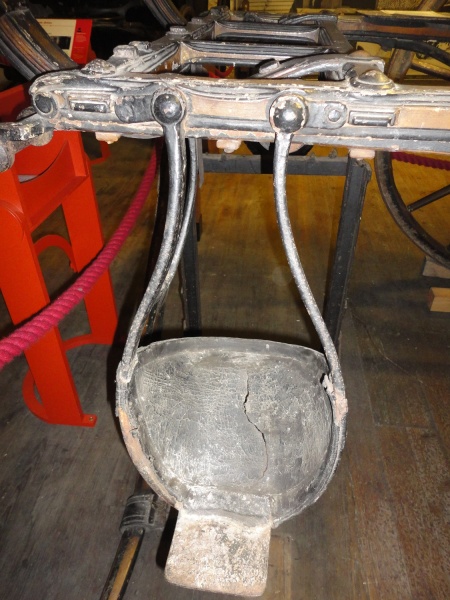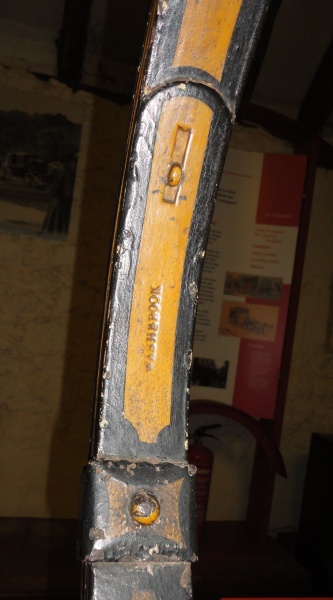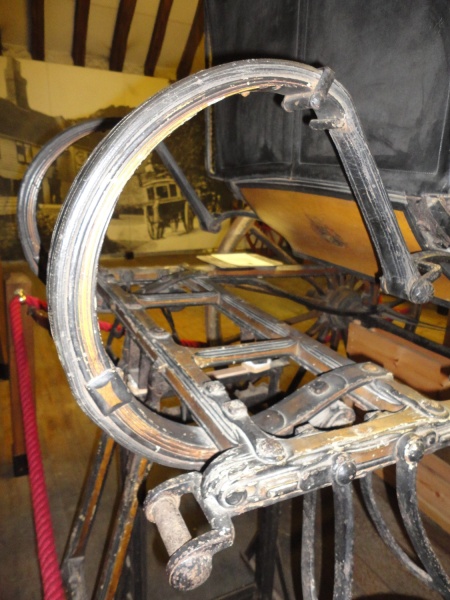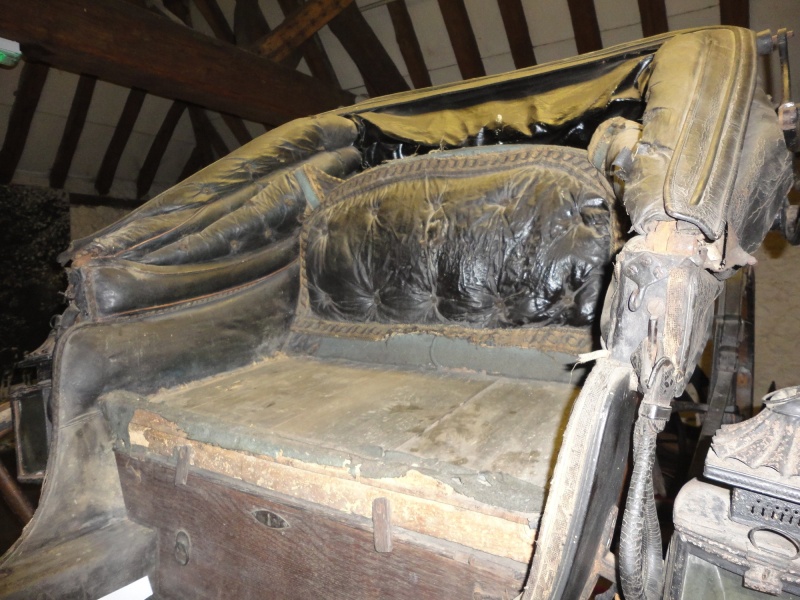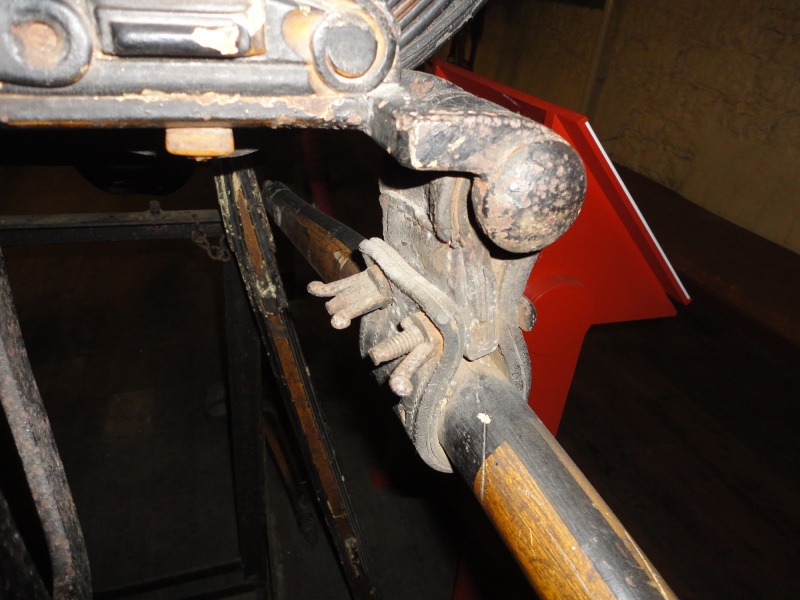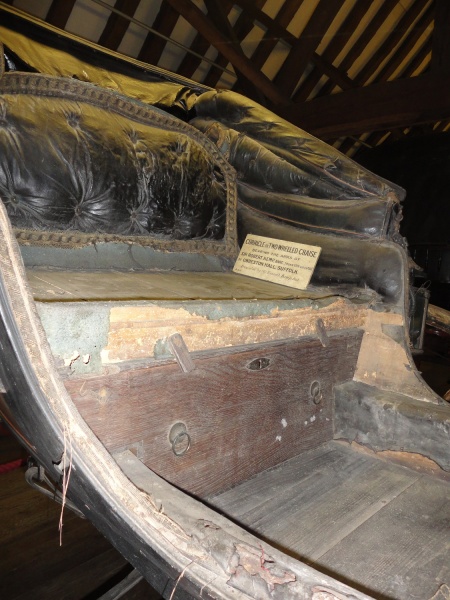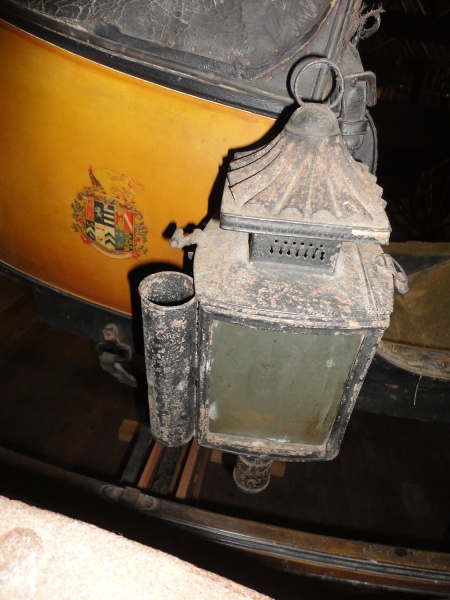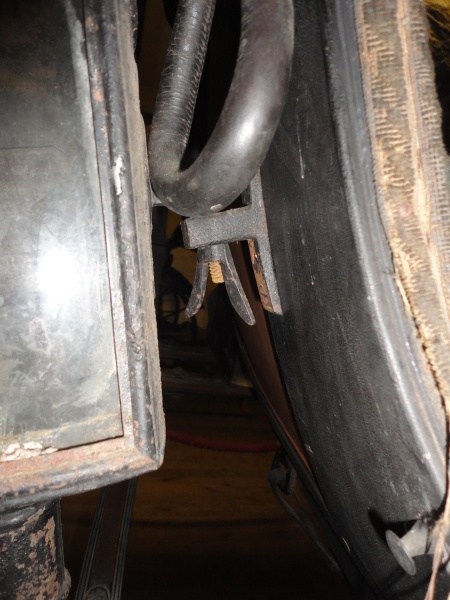Use the dots above to scroll through images.
Listed in 1 collection
Listed at 1 museum
Listed for 1 maker
Quick Details
Carriage Type
Curricle
Date of Production
1790 circa
Materials used
Paint, Wood, Iron, LeatherSummary of Curricle
Curricles were particularly popular in the late 18th and early 19th century and this example was built for Sir Thomas Kemp of Suffolk sometime before 1800. Curricles were very much the preserve of the wealthy as they were expensive to buy and to keep because they were drawn by a pair of horses and finding a well matched, elegant, high stepping pair could be a very expensive business.
This is the only 18th century curricle in existence, a very special carriage.
Full description
A unique carriage being to only 18th century Curricle in existence. It was built for Thomas Kemp of Suffolk whose coat of arms is emblazoned on the side and back panels. A Skeleton Gig dating from the early 19th century in the Norfolk Museum Service collection was also owned by Thomas Kemp and is painted in the same colour scheme.
This is an extrordinary carriage that cannot fail to excite any carriage enthusiast. The body is held high on curved dumb irons attached to big sweeping C springs at the back and slightly smaller ones at the front. From the side one can see the beautiful ogee shape of the back panel. The body itself is quite small and has a slightly curved floor with a well bottom of about 5 inches in depth.
At the back is a sword case accessed via the seat back. There are two iron rings toward the top of the rear edges of the body, leather sway straps were probably attached to these. Sway straps are still attached to either side of the body on iron fittings. On the front curved edge of the body are the original leather grab handles made in rolled leather. There are also hooks for the attachment of a leather apron which is missing. The seat has lost some of its covering which reveals a seat board of several layers of wood. Under the seat is a panel with two ring handles and a lock for stowing items. The removable seat back is covered with black buttoned leather and edged with a gold and black seaming lace. The inside edges of the side panels are also covered in black leather. At the front is a leather dashboard with an iron grab handle on each side running from top to bottom.
The folding leather head is pretty fragmentary but it survives in untouched condition. The front edge is served with a leather with a brass beading. The head irons are in good condition and fold neatly.
The body is supported on C springs attached to the ends of the side bars, which are slightly compassed down. These side bars are bolted to the axle via carved blocks and supported with curved iron braces. At the back is a platform fitted across to each side bar. It has an imperial fitted which is made of wood and covered in black leather. The lid folds over the top and down the front edge and is secured with a series of small leather straps and buckles.
At the front is a double cross bar which supports the pole (missing). A rather nice feature of this carriage is that the original stand survives which hooks under the centre of the front of the Curricle and allows the carriage to stand level and support itself whilst a pair of horses are being harnessed to it. Both swingletrees survive. The offside one is still attached via a hefty leather mount bolted together with wonderful handmade wing nuts. The second swingle tree is missing its leather mount and lies on the floor alongside the Curricle.
To mount the Curricle there are two steps. One is mounted on to the side bar and consists of a square iron tread. The second step is on the nearside of the side bars. It is a bell step with a curved leather back and square iron plate.
The wheels are 14 spoke English pattern with iron tyres on common axles. They are rather fragmentary condition with the tyres pretty much holding dust together with the felloes having disintergrated, the spokes appear to be in fairly good order though.
The lamps are very exciting and original to the Curricle. They have plain rectangular lights at the front and side. The front light drops down to enable access to light the candle. The candle holder is fairly short and has three collars. The single chimney’s have a fluted top with a plain ring. The offside lamp has a rather unusual feature with a whip holder being attached to one corner.
The side and back panels, under carriage, wheels and swingle trees are painted yellow with black lining. The foot well is painted black. On the side and rear panels is the Kemp family crest.
Inscriptions
Stamped on the C springs: WASHBROOK
Condition report
Part of the excitement of this carriage is that it is in original untouched condition. But it is poor in many places. The felloes of the wheels are fragmentary in places, this carriage must not be wheeled for fear that the wheels will collapse. Much of the leatherwork has survived with only the seat cushion being missing. The leather upholstery is certainly worn but considering its age in fair condition. The leather head is cracked in places and needs treating it has become detached from the back of the carriage. Other leather work such as the spring braces and the grab handles are in good order.
The carriage is in need of a full conservation clean and work carried out to stabilise the fragile areas.
Access information
This Curricle is in the care of the Tyrwhitt-Drake Carriage Museum
Maidstone Museum and Art Gallery
St Faith's Street,
Maidstone
ME14 1LH
Picture credit
Maidstone Museum and Bentliff Art Gallery / Amy Bracey / Robert Lovell

 Carriage Foundation
Carriage Foundation